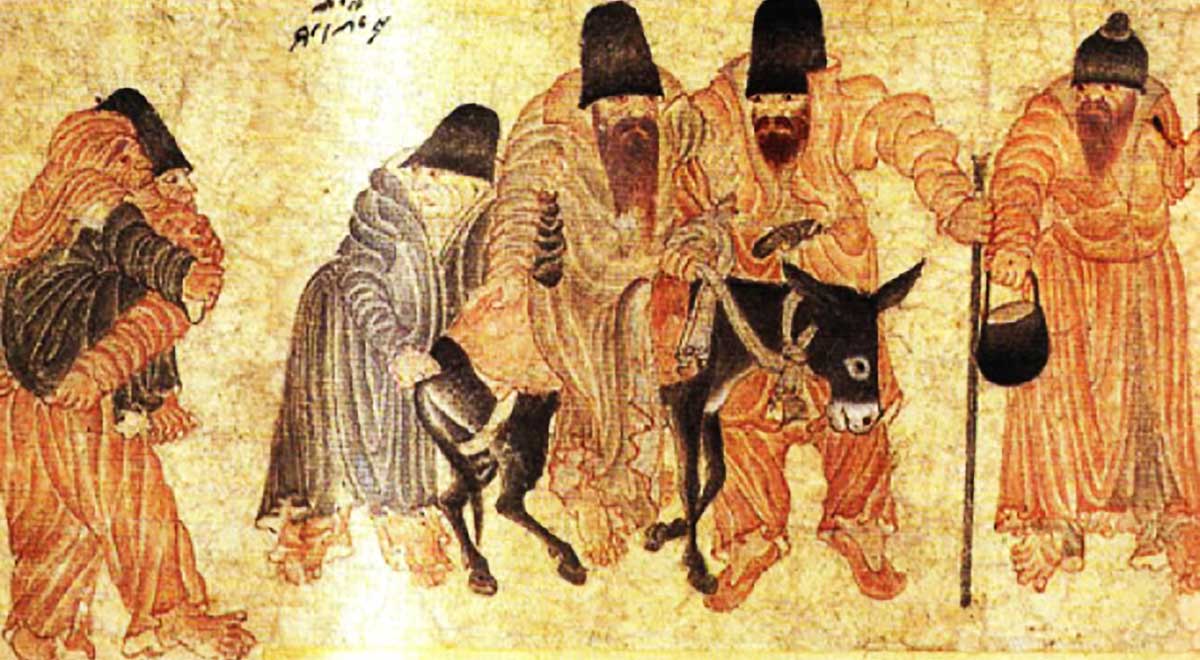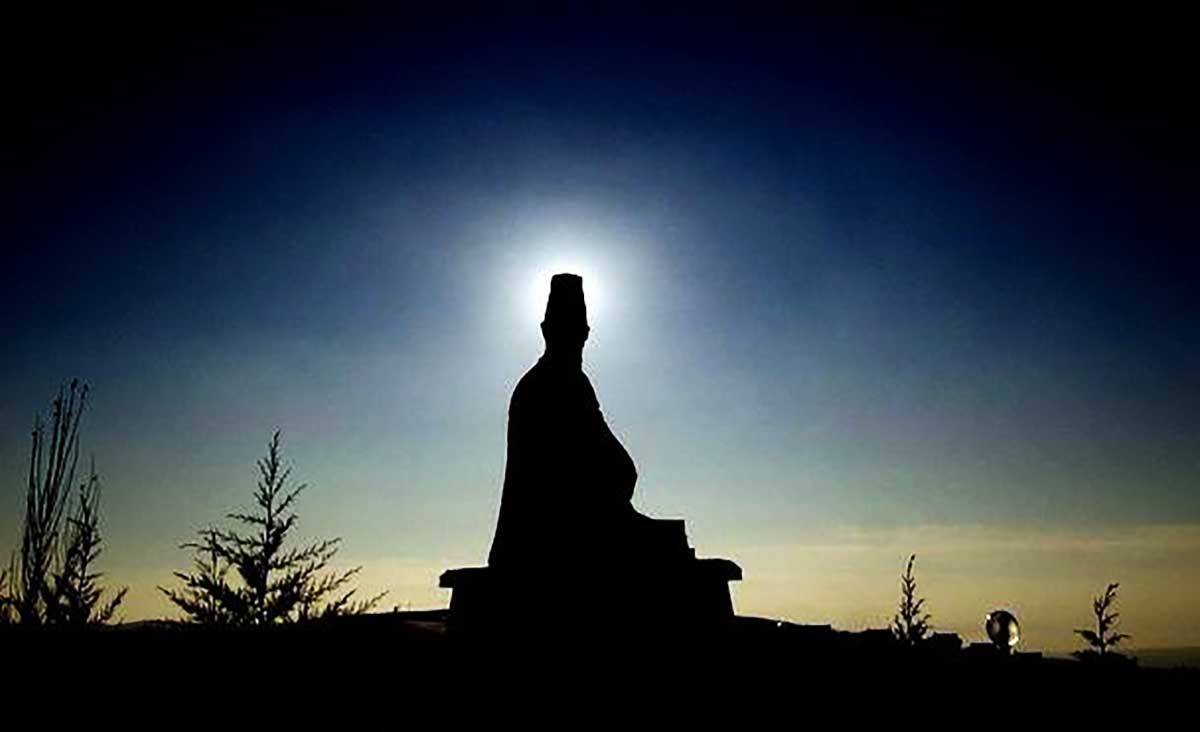Istanbul, the city where east meets west thanks to its location. It has been the cradle of numerous civilisations for centuries, hosting three of the world’s main religions that shaped the urban landscape of this amazing city. In this city, you can see a mosque, a building in the form of a church and synagogue all in one place. A few steps away, one may come across one of the dervish saints’ dwellings. Beyond any shadow of a doubt, this mystical city of Istanbul is speaking to us.
“Which building in Istanbul would speak most if they had a chance to manifest themselves?” A friend once asked me this question and my reply was the Kalenderhane mosque to my friend’s surprise. Nonetheless the Kalenderhane mosque is the most suitable illustration of the rich cultural interchange between beliefs in Istanbul.
Its story begins with an Eastern Orthodox Church dedicated to Theotokos Kyriotissa. The church was used by Crusaders as a Roman Catholic Church during the reign of Constantinople in the 13th Century. – The first frescoes of Constantinople which are on display in the Istanbul Archaeology Museum were established here on behalf of Saint Francesco. – After the Ottoman conquest of Constantinople, the church was personally assigned by Sultan Mehmed II to the Qalandar dervishes for their great efforts during the holy war against Constantinople. Since then the building has been known as “Kalenderhane” meaning “the house of Qalandar” and it’s honoured as the first dervish lodge in Istanbul. It was finally turned into a mosque in 1746 when Hacı Beşir Aga, the Kızlar Ağası of Topkapı Palace built a mihrab, a minbar and a mahfil thus completing the conversion of this building into a mosque. However, the name of the building has never been changed since being given to the Qalandar saints. The question that follows then is; who is a Qalandar?
Thanks to Rumi, a lot of people today have come to know about Sufism which is Islamic mysticism. Unfortunately, many believe that the teaching of Rumi is the only one. Truth is there is a variety of Sufi orders in the history of Islam, one of them Qalandariyya. Qalandariyya is a sect that was formed by wandering Sufi dervishes. There are many different opinions regarding the foundation of the Qalandariyya order, Islamic scholars however attribute its genesis to famous Islamic mystics Qutb al-din Haydar and Jamal ad-Din. They specified the principles of the order, its status and also increased its popularity among the people. By the end of the 12th century, the movement was flourishing in Syria, Eastern Iran, Transoxiana, Khorasan and South Asia. In the 13th Century, the movement was at its peak spreading to surrounding areas especially in Anatolia where the wandering dervishes were gladly welcomed by the Turkish nomads. Following their arrival, the Qalandar dervishes had a great influence in the Islamisation of Anatolia.
In the spring of 1453, the Qalandar dervishes were seen slopping down to the Bosphorus to support the Sultan’s army during the Holy War against Constantinople. Upon the city’s conquest, Sultan Mehmed the Conqueror bestowed the church to the Qalandar saints who used the building as a dervish lodge. They did not enjoy the dwelling for long because of their marginal character and opposition to Orthodox Islam.
[su_quote cite=”Rumi”]Carousing and ruby – wine and ruins and disbelief, these are the kingdom of the Qalandar, but he is detached from it. You say “I am Qalandar!”, but that is not agreeable, since qalandarom is uncreated.[/su_quote]
Qalandar’s way of life, appearance, philosophic ideas and beliefs were found aberrant by ordinary Muslims, Ottoman statesmen and Ottoman Sultans. The teachings of Qalandariyya were based on asceticism which provided to dervishes an alternative pattern of living. Like all the Sufi dervishes, these free spirited ascetics also disengaged themselves from the material world whilst harshly criticising the moral rules of society. Qalandar saints never sought human approval, official religious rules nor social norms. Considered as anarchists of their times, the Qalandar dervishes appeared to be heretics to the society who incessantly complained to the Ottoman statesmen and Sultan against the wandering Qalandar dervishes.
Since time immemorial, society has been hesitant when it comes to vagabonds, and the Qalandar dervishes had the character of a vagabond. They disliked stability and material comfort, they are said to have been blessed with the wandering bohemian nature of Jesus Christ as they wandered from place to place to spread the words of love throughout their life. They attained food through begging on the streets, palmistry and fortune telling at coffee houses and also through trickery where necessary.
[su_quote cite=”Baba Tahir”]I’m a wanderer whose name is Qalandar, I’ve neither home, nor goods, nor kitchen. When day comes, I wander round the world; when night falls, I lay my head on a brick.[/su_quote]
Compared to other Sufi dervishes, the Qalandar dervishes generally had an absurd appearance. Their heads and beards were usually shaved, they wore shorts skirts with cloaks and fur caps over their shoulders. At times, they had piercings on their necks, wrists and genitals. In a painting in the Treasury Library at Topkapı Palace Museum, a Qalandar dervish is seen hanging a bag of opium on his waist. In another painting in the Metropolitan Museum of Art, a Qalandar dervish is wearing the usual brown animal fur. Nevertheless, it’s his red earring and bangles that are quite captivating. Qalandar dervishes are well known for habitually putting gewgaws on their body.
The wandering dervishes had no respect for any custom and conventions of society that valued worldly things like a great career, wealth, heterosexual marriages, opulence, literacy or physical appearance among others. They harshly criticised these norms and responded to society with celibacy, sodomy, mendicancy, starvation and self-mutilation. Additionally, the Qalandar dervishes and Sunni society also conflicted in the way of worship with the use of music, wine drinking and opium by the Qalandar dervishes during worship.
Sufism has always been expressed through music and so did the Qalandar dervishes during worship. This way of worshipping was found to be odd by a majority of Muslims since in their eyes the Qalandar dervishes were evil- doers. It is probably for this reason that the Qalandar dervishes did not make a public show of piety. They considered music to be a way of coming closer to Allah, a way in which they had to be ‘Joyful in God’. They drank wine and smoked opium to raise their spirits, dancing to the sound of different instruments while in a mood of ecstasy.
As time went on, Qalandar dervishes succumbed to external pressure tardily commencing worship with the dervishes of the Bektashi order. The Bektashi order was founded by Hajji Bektashi Veli one of the most celebrated Sufi saints together with Rumi. He shaped the land of Anatolia with his ideas and beliefs. In the course of events, Qalandar dervishes and their principles melted away into Bektashism which would later become the main Islamic teaching of the Janissary Corps. The Bektashi order was abolished all together throughout the Ottoman Empire with the abolition of the Janissaries. Turkey is still home to a number of Bektashi people which is not the case with the Qalandar dervishes, their memory lies in their house in Istanbul.






